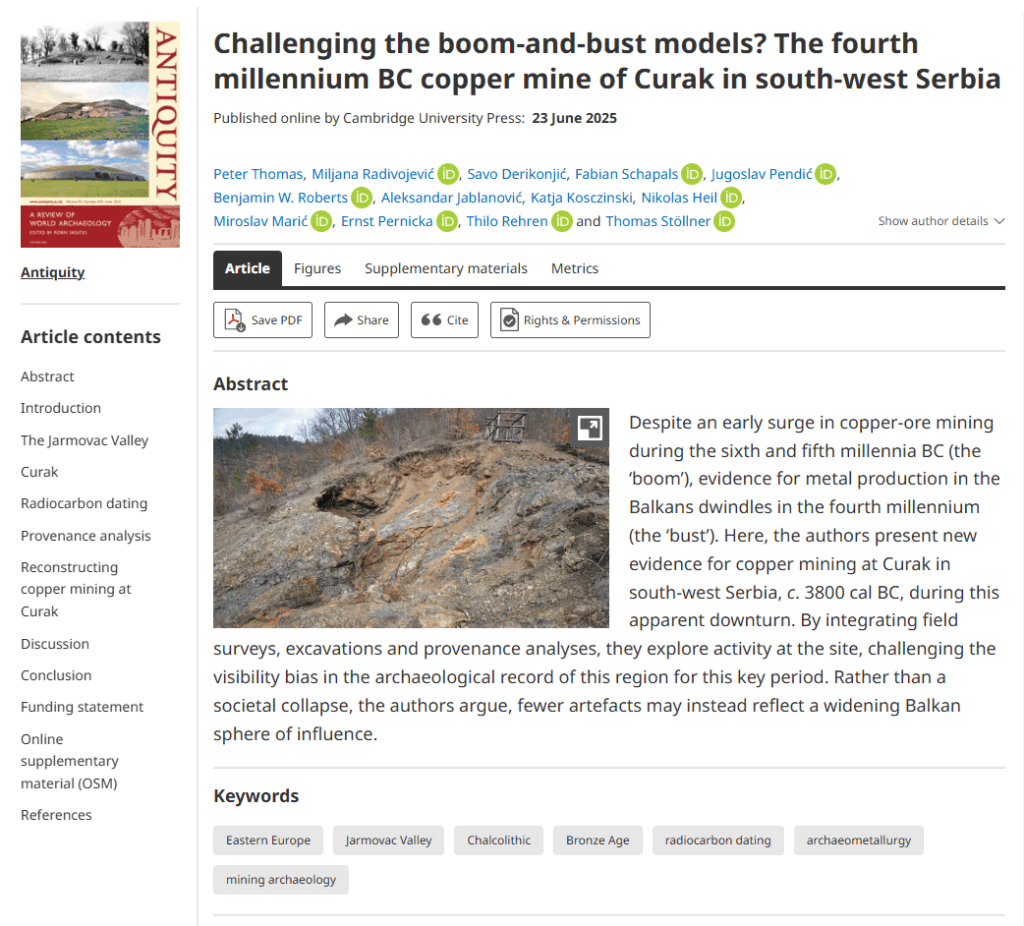Neue Studie zu Čurak liefert wichtige Impulse für die Forschung zur Metallurgie im 4. Jahrtausend v. Chr.
Eine aktuelle Studie liefert erste direkte Nachweise für Kupferbergbau am Fundort Čurak in Südwestserbien, datiert auf ca. 3800 cal BC – und damit aus einer Zeit, die bislang als Phase des metallurgischen Rückgangs galt. Auf Grundlage eines interdisziplinären Ansatzes aus Geländeprospektion, Grabungen und Provenienzanalysen wird die Bedeutung des Fundplatzes für die frühe Metallverarbeitung bewertet. Die Ergebnisse werden im Kontext der jüngsten Forschung zu frühen europäischen Kupferbergwerken diskutiert und tragen zur Weiterentwicklung bestehender Modelle zur Verbreitung technologischen Wissens bei.
This paper presents evidence of the first copper mining in the Balkans that occurred during the apparent metal production ‘bust’ and societal collapse in the 4th millennium BC. The copper mine at Curak in southwest Serbia was exploited from c. 3800 cal BC and an integrated approach encompassing a detailed survey of the area, field excavations and a suite of provenance analyses was applied in identification of its activities. The paper then evaluates the results against the recently published and now extensive data surrounding early copper mining across Europe to explore models of technological transmission and metal production.

